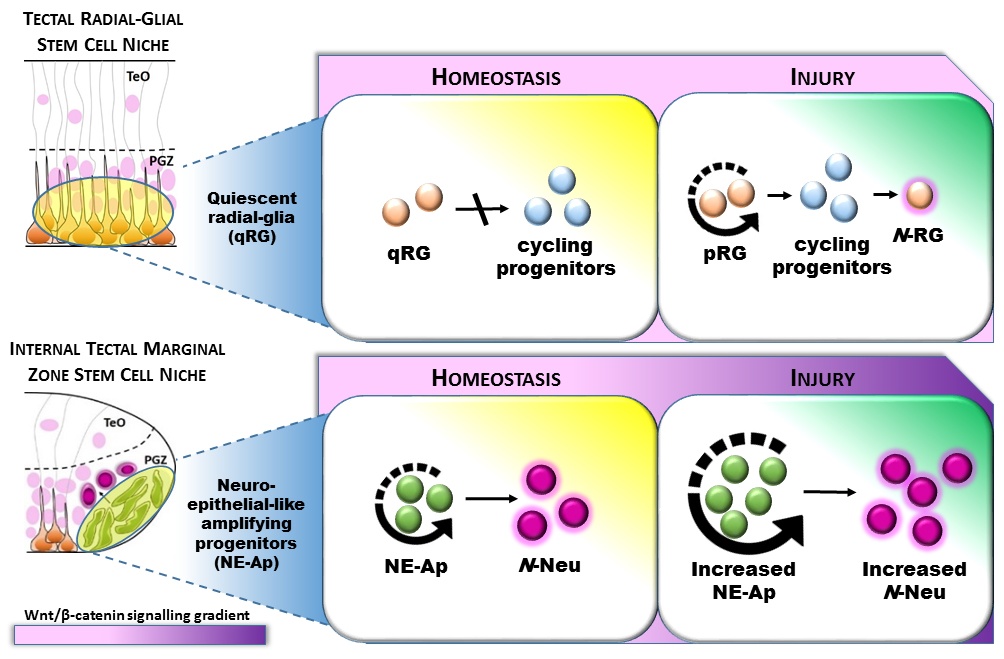
Midbrain tectal stem cells display diverse regenerative capacities in zebrafish
Midbrain tectal stem cells display diverse regenerative capacities in zebrafish
Benjamin W Lindsey, Georgia E. Aitken, Jean K. Tang, Mitra Khabooshan, Alon M. Douek, Celia Vandestadt, and Jan Kaslin
How diverse adult stem and progenitor populations regenerate tissue following damage to the brain is poorly understood. In highly regenerative vertebrates, such as zebrafish, radial-glia (RG) and neuroepithelial-like (NE) stem/progenitor cells contribute to neuronal repair after injury. However, not all RG act as neural stem/progenitor cells during homeostasis in the zebrafish brain, questioning the role of quiescent RG (qRG) post-injury. To understand the function of qRG during regeneration, we performed a stab lesion in the adult midbrain tectum to target a population of homeostatic qRG, and investigated their proliferative behaviour, differentiation potential, and Wnt/β-catenin signalling. EdU-labelling showed a small number of proliferating qRG after injury (pRG) but that progeny are restricted to RG. However, injury promoted proliferation of NE progenitors in the internal tectal marginal zone (TMZi) resulting in amplified regenerative neurogenesis. Increased Wnt/β-catenin signalling was detected in TMZi after injury whereas homeostatic levels of Wnt/β-catenin signalling persisted in qRG/pRG. Attenuation of Wnt signalling suggested that the proliferative response post-injury was Wnt/β-catenin-independent. Our results demonstrate that qRG in the tectum have restricted capability in neuronal repair, highlighting that RG have diverse functions in the zebrafish brain. Furthermore, these findings suggest that endogenous stem cell compartments compensate lost tissue by amplifying homeostatic growth.



